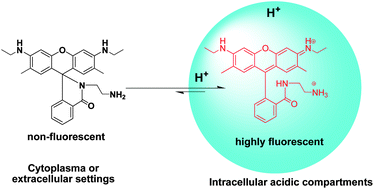Imaging of intracellular acidic compartments with a sensitive rhodamine based fluorogenic pH sensor
Abstract
The parameters of intracellular acidic compartments are altered in apoptosis, autophagy, cancer metastasis, etc. Low background and selective staining of lysosomes and autophagosomes was achieved with N-(rhodamine 6G)-lactam-


 Please wait while we load your content...
Please wait while we load your content...